With 89% of businesses making the most of SaaS, its implementation has ballooned extensively, meeting the demands of modern work and the hyperspecialization of business. Surprisingly, the number is expected to increase by 15% by the end of 2025.
Entrepreneurs have wisely switched to the new software paradigm, with continuous updates, fewer complications, and a secure domain, fueling insight, agility, and innovation. Even huge tech labels like Microsoft remained wide open and diverse with a 23% SaaS share as a provider compared to SAP, Google, IBM, and Alibaba.
Why is SaaS SEO Different?
SaaS SEO stands as a unique discipline that requires a tailored approach to achieve growth and success. Let’s explore why SaaS SEO differs and uncover the secrets to unlocking its potential.
SaaS SEO:
- Targets keywords that educate and engage potential customers about intangible SaaS products
- Focuses on building long-term relationships with prospects instead of immediate conversions
- Prioritizes customer retention and lifetime value in subscription-based pricing models
- Precisely targets a narrower audience with tailored keyword strategies and content creation
- Optimizes complex site structures for better user experiences and search engine accessibility
- Broadens SEO efforts to include industry-related keywords and competitor analysis
- Establishes trust and credibility through content marketing and strategic link building
Importance of SEO for SaaS: Reasons Why You Need to Invest in a Solid Strategy
In the bustling digital landscape, having a robust SEO strategy is paramount for SaaS businesses seeking to thrive. Let’s delve into the reasons why investing in SEO is a game-changer and explore the multitude of benefits it brings.
Increase Visibility and Drive Traffic:
Unlock the potential of SEO to guide potential customers directly to your SaaS business. By implementing effective techniques, you can improve your website’s ranking, making it easier for your target audience to discover your solutions.
Build Credibility and Trust:
Stand out from the crowd by building a strong brand image through SEO. Consistently appearing at the top of search results signals trustworthiness to users, establishing your SaaS business as a reputable source.
Share valuable content to position yourself as a thought leader, inspiring confidence in potential customers.
A refined user experience (UX) of your website makes the navigation easier thing to find the information they are looking for.
Taking an example, we can see Apple’s website is clean and minimalist, with a focus on showcasing its products and services. The site is easy to navigate, with clear sections for each product line and a helpful search feature.

Boost Conversion Rates:
Convert visitors into loyal customers with a well-executed SEO strategy. Higher search rankings attract qualified traffic, increasing the likelihood of conversions. Optimize landing pages and target relevant keywords to create a user-friendly experience that encourages action, such as signing up or making a purchase.
Sustain Success over Time:
Invest in SEO for long-term results. With ongoing effort and optimization, you’ll enjoy a steady flow of organic traffic, reducing dependence on expensive advertising channels. Embrace the cost-effective power of organic search to drive consistent traffic and revenue.
Gain a Competitive Edge:
Outrank your competitors and become the go-to choice for potential customers. Craft a focused SEO strategy targeting niche keywords, positioning your SaaS business as the leading authority in specific industry segments. Attract highly qualified leads and convert them into loyal customers, solidifying your competitive position.
Develop an Effective SEO Strategy:
Start with comprehensive keyword research to understand your audience’s language and intent. Optimize on-page elements and provide a seamless user experience. Create valuable content, build authoritative backlinks, and monitor performance metrics to refine your strategy continuously.
Stay Ahead of SEO Trends:
Adapt to evolving search engine algorithms and user behavior. Leverage local SEO, prioritize user experience, optimize for voice search, and embrace emerging technologies. Networking, attending conferences, and staying informed will keep you at the forefront of SEO knowledge.
Innovate, Adapt, and Thrive in the Future:
Utilize artificial intelligence and machine learning to gain insights and automate processes. Foster a culture of experimentation and optimization within your SaaS organization. Continually measure the impact of your SEO efforts, track performance indicators, and make data-driven decisions.
Supercharge your SaaS business by embracing the power of SEO. Increase visibility, build credibility, boost conversions, and achieve long-term success in the ever-evolving digital landscape.
Understanding Your Target Audience: Key Steps for SaaS SEO
Identifying Your Target Audience:
Efficient SaaS SEO begins with precisely identifying your target audience. By knowing who your ideal customers are, you can tailor your SEO strategy to effectively reach and engage them.
Understanding Their Needs and Pain Points:
To optimize your SaaS SEO, gain a deep understanding of your target audience’s needs and pain points. This knowledge enables you to create valuable content and solutions that directly address their challenges.
Creating a Buyer Persona:
Developing a buyer persona is a crucial step in SaaS SEO. By crafting a detailed profile of your ideal customer, including demographics, behaviors, and motivations, you can align your SEO efforts to resonate with their preferences and attract the right audience.
7-Step Guide to SaaS SEO Strategy
Step 1. Align Goals and KPIs with Your SaaS SEO Strategy
In the ever-competitive digital landscape, a well-crafted SaaS SEO strategy is essential for driving organic traffic, boosting conversions, and achieving long-term success.
To effectively measure and optimize your SEO efforts, it’s crucial to align your goals and key performance indicators (KPIs) with the specific metrics that matter the most. Let’s explore some key metrics and their significance in evaluating the effectiveness of your SaaS SEO strategy.
“Did you know that out of all SaaS companies, only 1.9% were analyzed and categorized into B2B and B2C? Well, interestingly, it was found that B2C companies had a significantly higher SEO conversion rate than their B2B counterparts.
With a conversion rate of 2.5%, B2C companies outperformed B2B companies, which had a conversion rate of only 1.1%. This just goes to show that the type of company you have can greatly impact your SEO success!”
To calculate your conversion rate, you would use the formula:
Conversion Rate = (Number of Conversions / Number of Sessions) x 100
= (100 / 10,000) x 100
= 1%
So, in this example, your conversion rate would be 1%. This means that out of every 100 visitors to your website, one of them is converting into a customer or lead.
Organic Traffic: The steady stream of website visitors who discover your site through natural search results, without paid advertising, boosting your visibility and reach.
Find out which competitors they visit, the blog websites they read often, and what stuff they usually search on Google or any other SERP, solely related to your business service.
Keyword Rankings: Your website’s position on search engine results pages (SERPs) for specific keywords, determines its visibility and potential for attracting targeted organic traffic.
Conversion Rate: The percentage of website visitors who take a desired action, such as signing up for a free trial or making a purchase, reflecting the effectiveness of your website in turning visitors into customers.
Customer Acquisition Cost (CAC): The total expenses incurred in acquiring a new customer, encompassing marketing and sales efforts, providing insights into the financial efficiency of your customer acquisition strategies.
$10,000 on SEO over a month, and during that same month, you acquired 100 new customers from organic search.
To calculate your CAC, you would use the formula:
CAC = Total SEO spend / Number of new customers acquired
= $10,000 / 100
= $100
So, in this example, your CAC for SEO would be $100. This means that on average, you spent $100 to acquire each new customer from organic search.
Lifetime Value (LTV): The total revenue generated by a customer throughout their engagement with your SaaS business, indicating the long-term value they bring to your company.
For example, If your SaaS business has an average monthly subscription cost of $100, and on average, a customer stays with your company for 24 months.
To calculate the Lifetime Value of a customer, you would use the formula:
LTV = Monthly Subscription Cost x Average Customer Lifespan
= $100 x 24
= $2,400
So, in this example, the Lifetime Value of a customer for your SaaS company would be $2,400. This means that on average, a customer will generate $2,400 in revenue throughout their lifetime with your company.
Churn Rate: The rate at which customers cancel their subscriptions or discontinue using your SaaS product, reflecting customer retention and satisfaction levels.
If you are looking forward to reducing the churn rate for your SaaS business, then here’s a quick reference.
Churn rate = (Number of customers lost during a period / Total number of customers at the beginning of the period) x 100
For example, let’s say you had 500 customers at the beginning of the month and lost 50 of them during that month.
To calculate your churn rate for the month, you would use the formula:
Churn rate = (50 / 500) x 100
= 10%
So, in this example, your churn rate for the month would be 10%. This means that 10% of your customer base stopped using your product or service during the month.
By tracking your churn rate over time, you can identify any issues that may be causing customers to leave and take action to reduce churn and retain customers.
Backlinks: The quantity and quality of external websites linking to your site, enhancing your website’s authority and reputation, and potentially improving search engine rankings.
Setting a backlink goal helps to ensure that your website is seen as authoritative and relevant by search engines. SaaS SEO experts calculate the same via SEMRush, Ahrefs, and Moz.
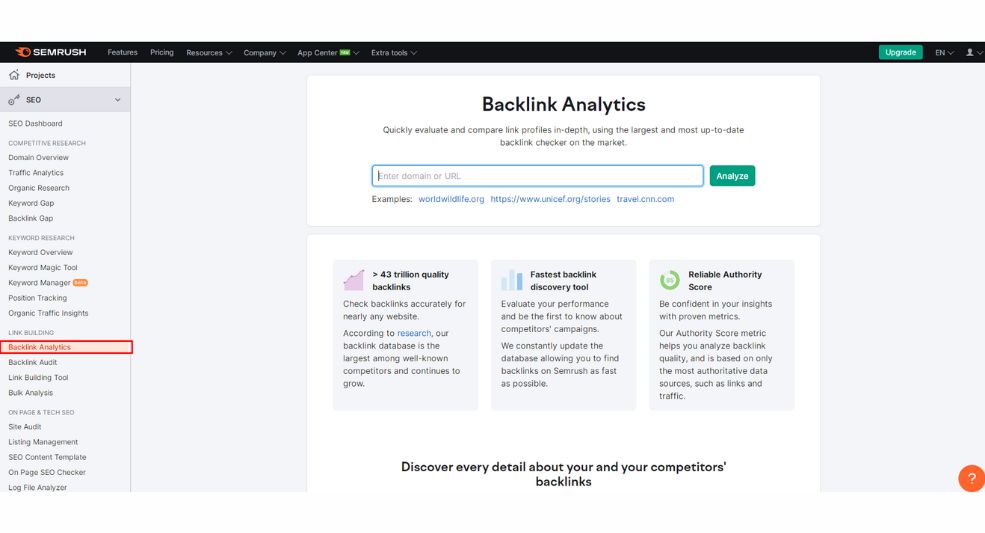
Domain Authority: An evaluation of your website’s overall credibility and influence, determined by factors like its age, quality of content, and the number of reputable websites linking to it. Check your DA rate here.
Time on Page: The duration visitors spend on a specific webpage, offering insights into the engagement and relevance of your content, and potentially influencing search engine rankings.
Step 2. Keyword Research
Keyword research is a vital aspect of SaaS businesses as it uncovers the language and terms used by potential customers within the industry. Keyword research provides valuable insights for your content marketing strategy.
It helps you create content that is highly relevant and engaging to your target audience, increasing the chances of attracting and retaining customers.
Targeting specific keywords: Through keyword research, you can identify long-tail keywords that have high relevance to your SaaS product or service while having less competition. These specific keywords can drive targeted organic traffic to your website.
Uncovering customer pain points: Keyword research can reveal the pain points and challenges that potential customers are trying to solve. This valuable insight can inform the development of new features or products to address their needs effectively.
Staying ahead of competitors: By conducting keyword research, you can identify emerging industry trends and search terms. This allows you to proactively adjust your SEO strategy to stay ahead of your competitors and capitalize on new opportunities.
Optimizing organic search visibility: Proper keyword research enables you to optimize your website’s content and meta tags, improving its visibility in organic search results. This can drive more traffic to your website and potentially increase revenue.
Here’s a quick breakdown illustrating how we performed thorough Keyword Research for one of our SaaS projects – www.Shoprocket.io with Google.
Fueling Your Keyword Journey: Brainstorming ‘Seed’ Keywords
‘Seed’ keywords act as the foundation for your keyword research. These are typically short phrases, one to three words long, that serve as the starting point for building your keyword list.
For instance, if you have an email marketing tool, your seed keyword could be “add e-commerce to website.” This seed keyword forms the basis for expanding and generating related keywords and topics.
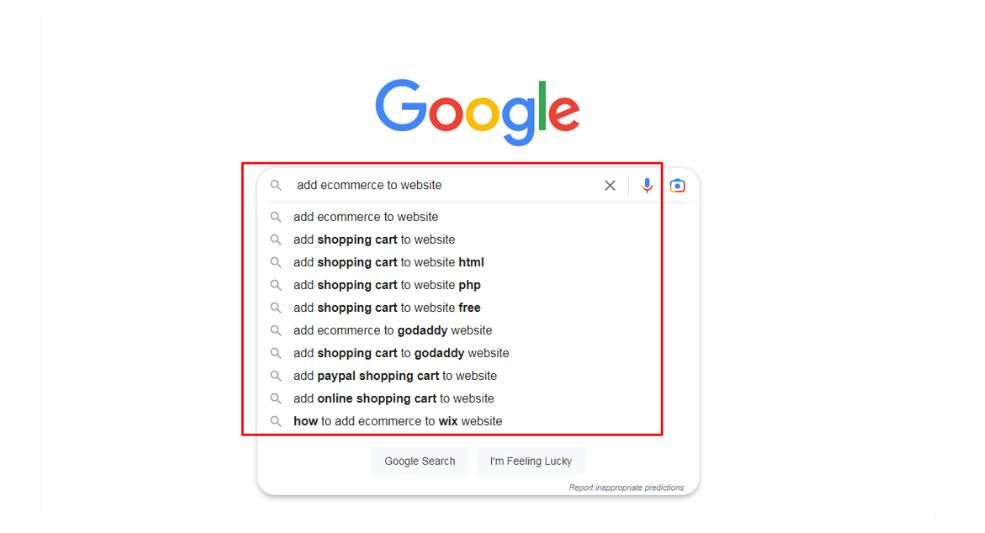
Targeting Saas Users at the Top of the Funnel
Top-of-the-funnel (TOFU) keywords help you capture the attention of potential customers who are just beginning to explore the idea of adding e-commerce functionality to their website.
Some examples of TOFU keywords for a SaaS e-commerce platform like https://shoprocket.io/ could be
- “how to add e-commerce to website”
- “adding e-commerce to your website”
- “add an online shop to my website.”
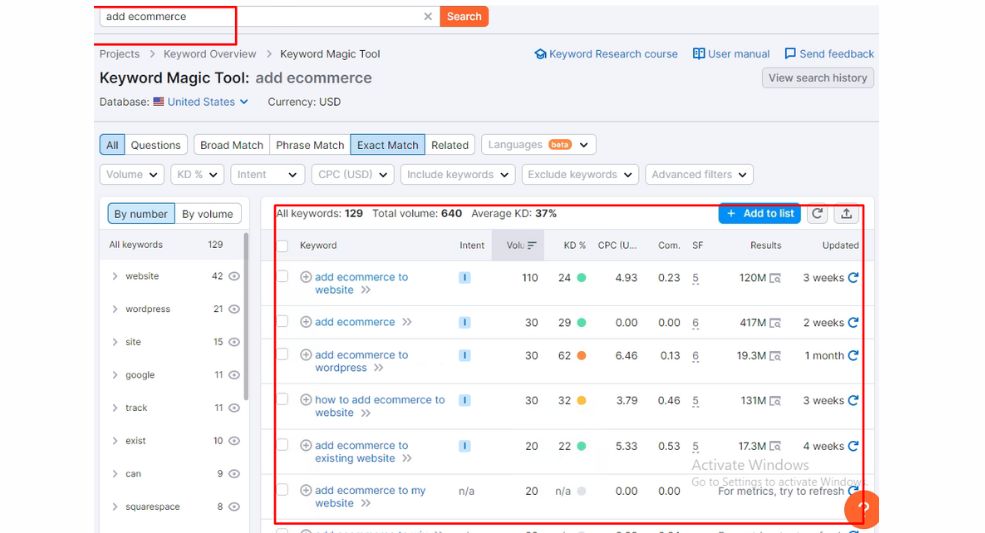
By targeting TOFU keywords, you can position yourself as a trusted authority in the industry, build brand awareness, and engage a broader audience.
Attracting Saas Users in the Middle of the Funnel
Middle-of-the-funnel (MOFU) keywords are designed to attract potential customers who have shown interest in ecommerce and are looking for more specific information on integrating it into their website.
Middle funnel keywords look like this:
- “E-commerce integration solutions”
- “Shopping cart installation for website”
- “Payment gateway setup for online store”
- “Ecommerce platform selection guide”
- “Custom ecommerce development services”
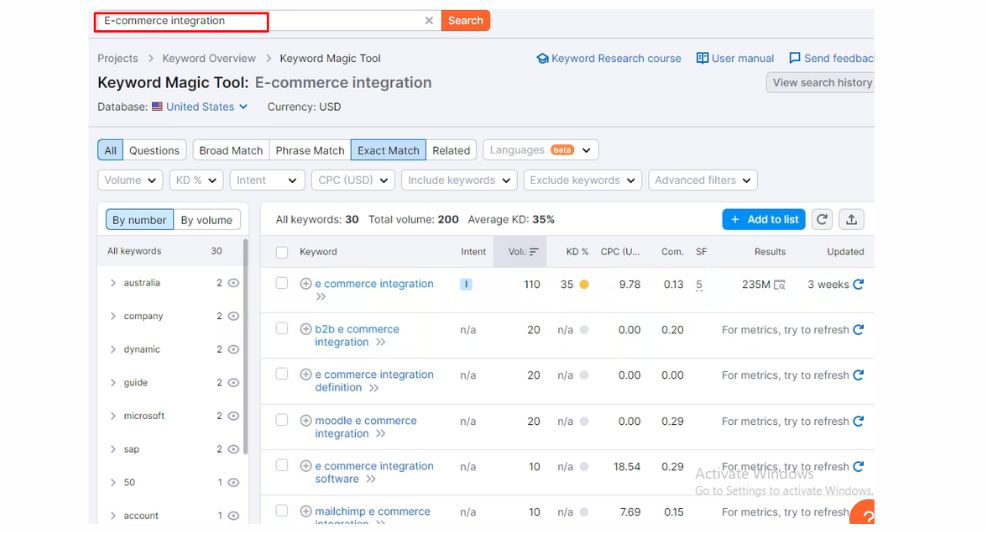
By targeting MOFU keywords, you can capture the attention of potential customers who are further along in the decision-making process and are more likely to take action.
Converting Saas Users at the Bottom of the Funnel
Bottom-of-the-funnel (BOFU) keywords are aimed at users who are ready to take action and actively seeking SaaS-based e-commerce solutions to add to their websites.
Some examples of BOFU keywords for a SaaS ecommerce platform could include
- “ecommerce website builder with SaaS integration”
- “SaaS-based payment gateway solutions for online store”
- “custom ecommerce solutions using SaaS technology.”
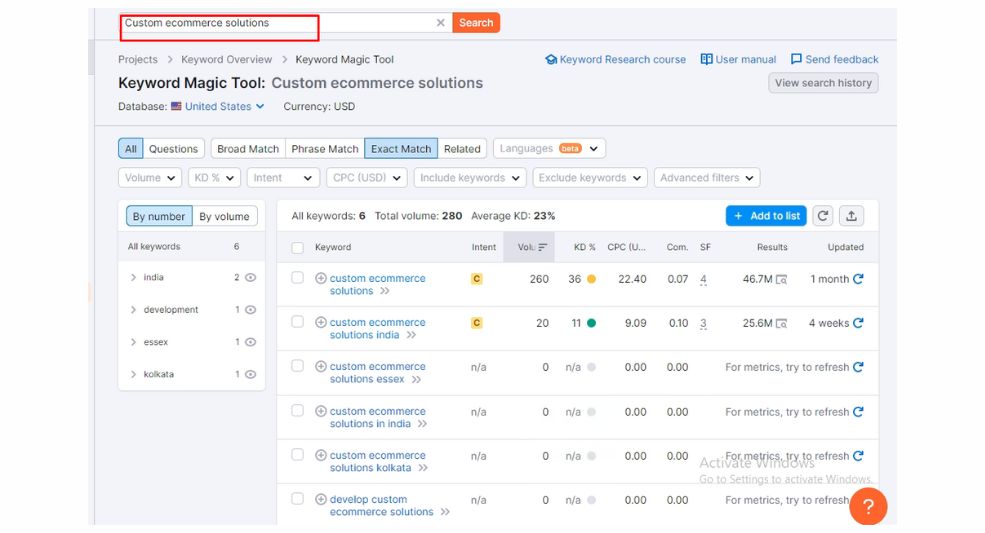
By targeting BOFU keywords, you can attract potential customers who are ready to make a purchase or take a specific action, such as selecting a SaaS-based ecommerce platform or investing in custom ecommerce solutions.
This can significantly impact your conversion rates and generate revenue for your business.
Step 3. Analyze Your Direct and Indirect Competitors
Identify direct competitors:
Start by identifying other SaaS businesses that offer similar products or services to yours. These are your direct competitors in the market.
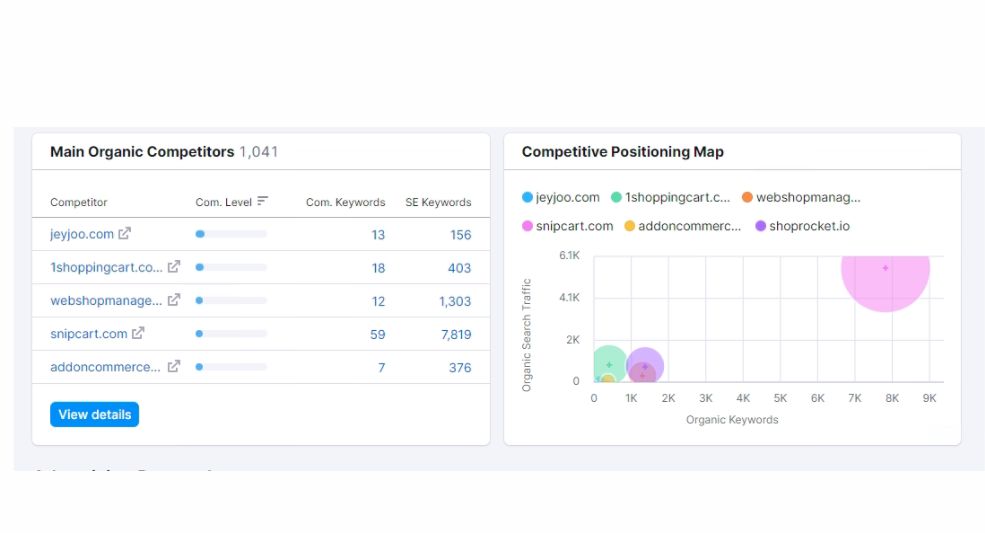
Research their SEO strategies:
Dive into their SEO tactics, including keyword targeting, on-page optimization, and backlink profiles. Understand what keywords they focus on and how they optimize their websites for search engines.
Analyze website content and user experience:
Take a closer look at your competitors’ website content, user experience, and conversion funnels. Identify areas where they excel and areas where they may be lacking, providing you with opportunities to differentiate yourself and improve your own SEO strategy.
Spot gaps in the market:
Look for gaps in your competitors’ product offerings or areas where they may struggle to meet customer needs. These gaps can present opportunities for your SaaS business to develop innovative solutions and capture a larger market share.
For example, if you are operating a project management SaaS business, you might research your competitors’ offerings and find that none of them provide an effective way for teams to manage complex projects involving multiple stakeholders.
This could be a gap in the market, and you could develop a new feature or product that specifically addresses this need.
By doing so, you could attract customers who are looking for a solution to this problem, and potentially gain a competitive advantage over your rivals.
Check their backlinks
Take a look at the backlinks of your competitors to see who is linking to their websites and where those links are coming from. This can give you an idea of what websites you should be targeting for link-building
Consider indirect competitors:
Expand your competitive analysis beyond direct competitors. Consider traditional software vendors or other companies offering similar solutions that may indirectly compete with your SaaS business. Understand their SEO strategies and positioning in the market.
Stay informed about industry trends:
Continuously monitor industry trends and changes in search engine algorithms that may impact your competitors’ SEO strategies. By staying up to date, you can make informed decisions and adapt your own SEO tactics accordingly.
Leverage competitive analysis tools:
Use competitive analysis tools like SEMrush and Ahrefs to gain deeper insights into your competitors’ SEO tactics, performance, and keyword rankings. These tools can provide valuable data to refine your own SEO strategy and stay ahead of the competition.
Monitoring is the Key
Last but not least, keeping a regular check on your competitors’ activities is the key. In addition, this can also help you stay ahead of the algorithm and search engine trends.
Experts share that it is a great idea to have at least five competitors to run your analysis; this will provide you with robust data and make attainable recommendations for your overall SaaS SEO plan of action.
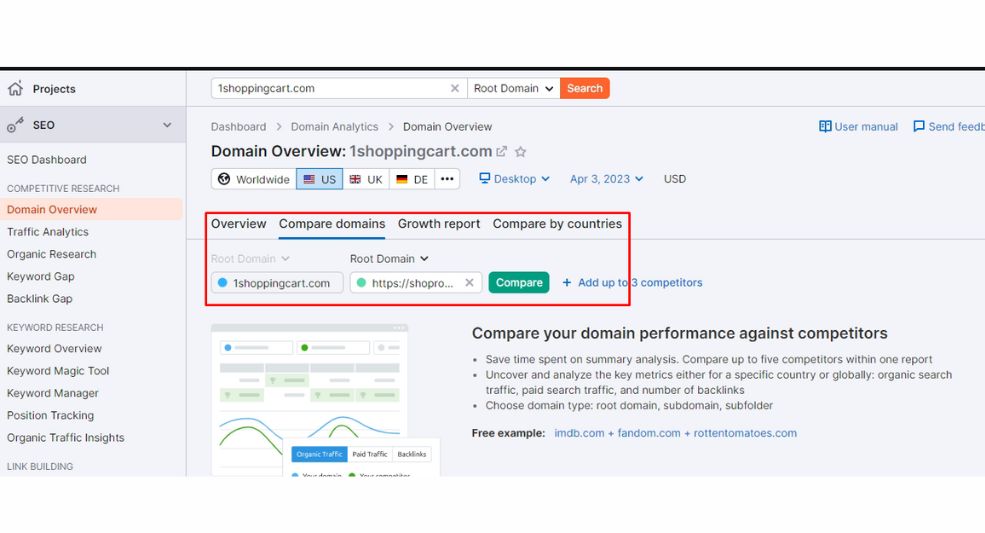
By understanding and analyzing your competitors’ SEO strategies, you can identify areas for improvement, capitalize on untapped opportunities, and position your SaaS business as a leader in the market.
Step 4. On-Page Optimization
As of now, when we are quite familiar with channeling keyword research for SaaS SEO, let’s dive further into On Page Optimization. In simple terms, this approach involves fine-tuning the elements of the website and improving user experience and search engine visibility. This mainly includes:
Optimizing Website Structure and Navigation: Building a Pathway to SEO Excellence
Let’s assume there are two SaaS businesses that offer project management software: Company A and Company B. Company A has a clear website structure and navigation that organizes its content into categories and subcategories such as “project management,” “task management,” and “team collaboration.” In contrast, Company B has a disorganized website structure with unclear navigation.
- Craft a clear and logical structure for enhanced search engine indexing and user experience.
- Empower users to effortlessly explore your website through intuitive and well-designed navigation.
- Unlock the potential of organizing content into keyword-aligned categories and subcategories.
- Embrace the mobile revolution by ensuring a responsive and mobile-friendly website.
- Stay ahead of the game by regularly reviewing and updating your website’s structure and navigation.
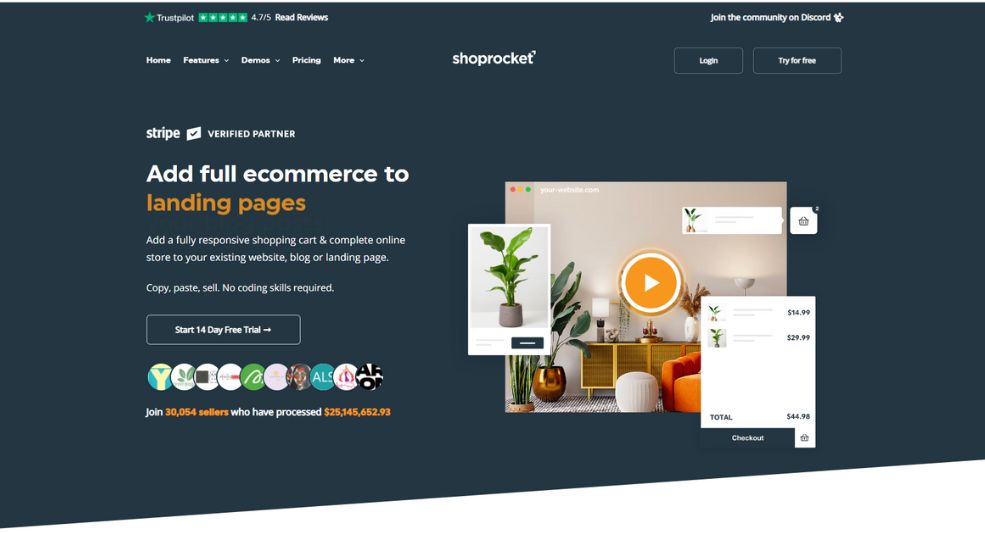
Ensure a User-friendly URL Structure: Paving the Way to SEO Triumph
- Create user-friendly URLs that captivate both humans and search engines.
- Harness the power of descriptive and concise URLs with relevant keywords.
- Make URLs readable with hyphens and avoid unnecessary parameters.
- Optimize URLs by employing canonical tags and eliminating duplicate content woes.
- Achieve consistency with a unified URL structure that aids user understanding.
- Continuously optimize and adapt URLs to align with evolving strategies and trends.
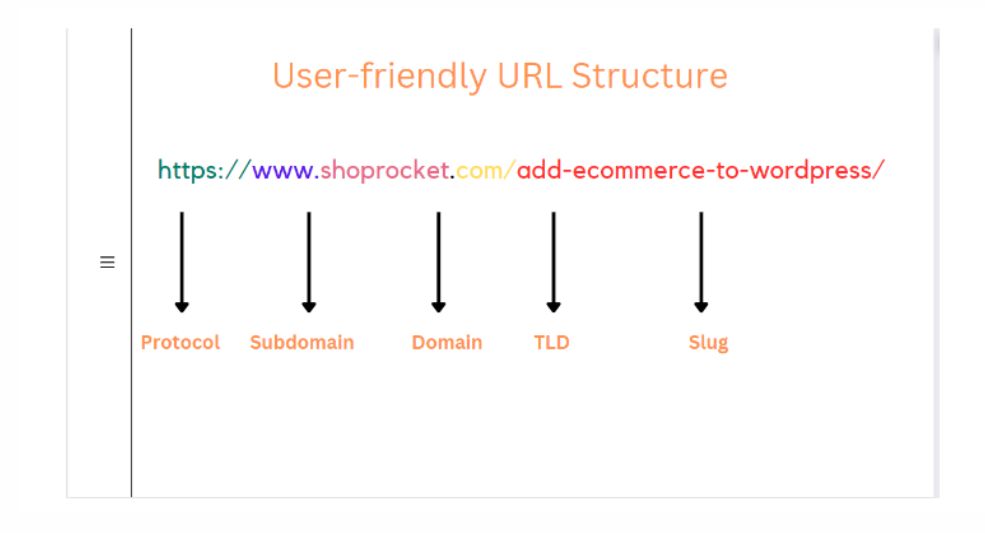
Use Internal Linking to Improve Navigation: Unleashing the Pathways to Discovery
- Weave an intricate web of internal links to enhance navigation and SEO prowess.
- Elevate relevance and ranking through descriptive and keyword-rich anchor text.
- Keep users engaged by linking to relevant and related content within your website.
- Embrace a hierarchical linking structure that facilitates user comprehension and exploration.
- Strike a balance with internal linking, avoiding excessive links that deter users and search engines.
- Stay vigilant by reviewing and refreshing internal links to align with evolving content and structure.
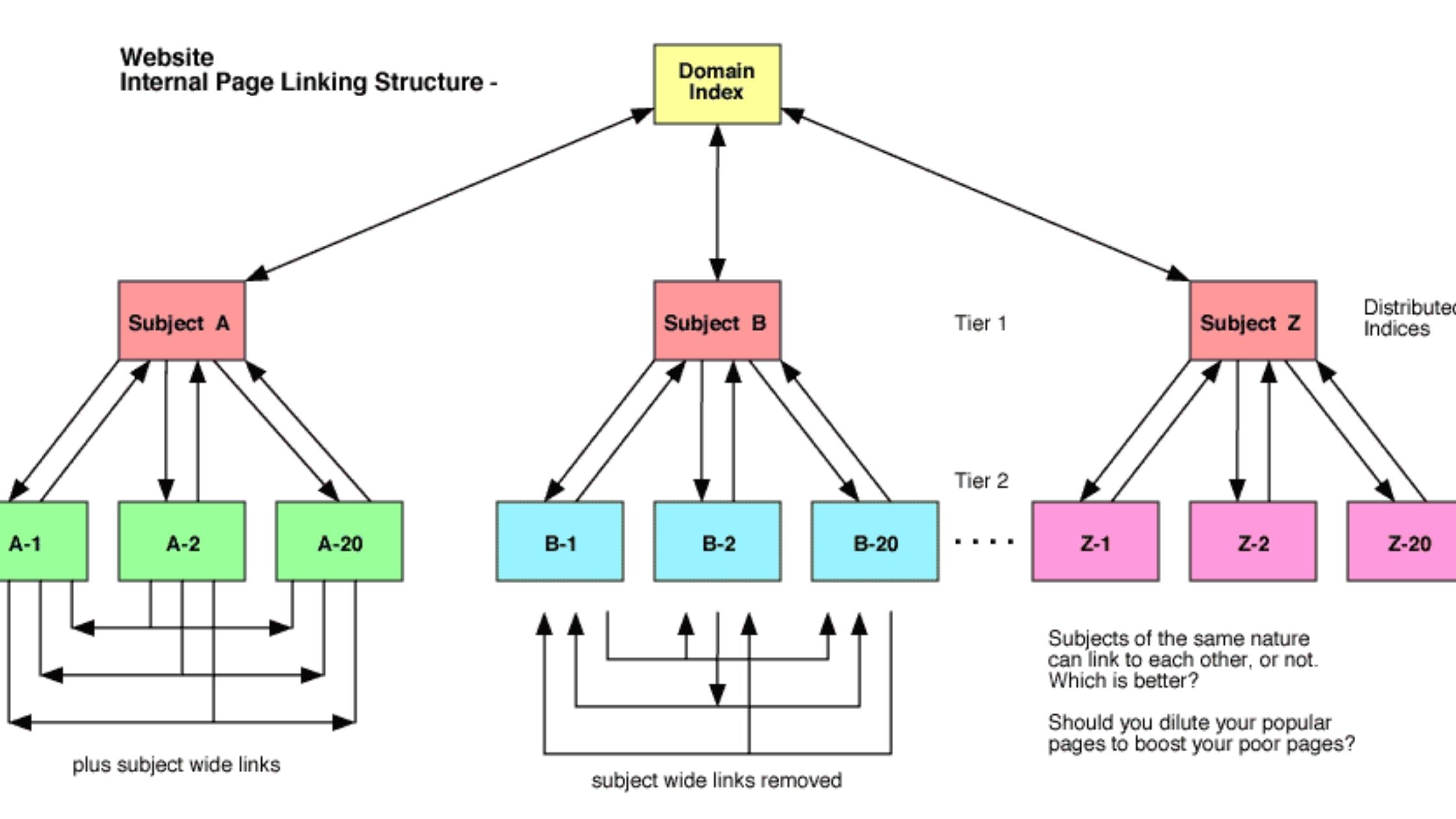
Use Breadcrumb Navigation: Guiding Users on an SEO Adventure
- Embrace breadcrumb navigation as a user-friendly compass for seamless exploration.
- Improve user experience by providing an easily traceable path through your website.
- Boost SEO performance through additional internal linking opportunities.
- Implement a clear and concise breadcrumb trail that reflects your website’s organization.
- Ensure prominent and consistent placement of breadcrumb navigation across your website.
- Leverage structured data markup to enhance the display and relevance of breadcrumbs in search results.
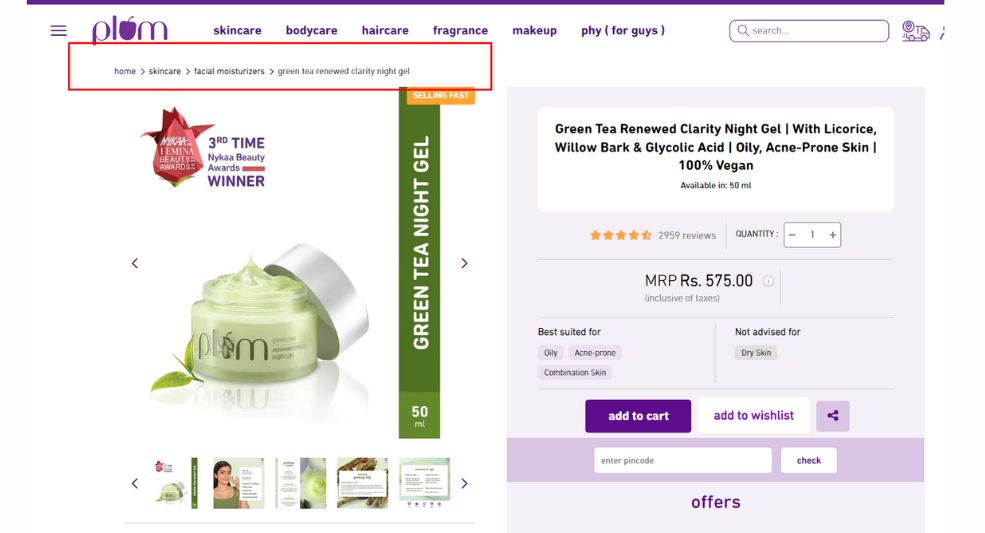
Optimize for Mobile Devices: Igniting SEO Success in the Palm of Your Hand
72.6% of internet users will access the web solely through their mobile phones in 2025. Sounds interesting, right?
- Unleash the power of mobile optimization to conquer the ever-growing mobile landscape.
- Embrace responsive design for a seamless and captivating user experience.
- Ignite speed and efficiency by optimizing page load times for mobile devices.
- Create mobile-friendly navigation and design elements that captivate mobile users.
- Maximize user engagement with mobile-optimized forms and interactive features.
- Leverage mobile-specific metatags and structured data to captivate search engines.
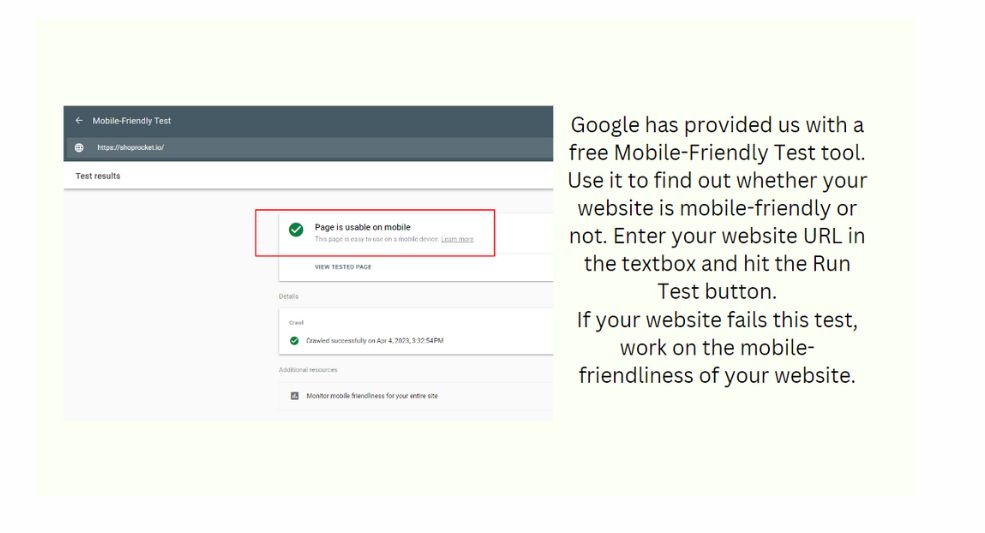
Include Meta Tags and Descriptions: Crafting Magnetic Metadata for SEO Stardom
Using a meta description can improve click-through rates from search results by up to 5.8% as compared to those who don’t.
- Weave captivating meta tags and descriptions that entice both users and search engines.
- Craft unique and descriptive meta titles that captivate attention and enhance relevance.
- Craft compelling meta descriptions that provide a sneak peek into your web pages.
- Tailor meta tags and descriptions to ensure relevance and uniqueness across your website.
- Amplify visibility and click-through rates with structured data markup.
- Continuously refine and update meta tags and descriptions to reflect evolving content and keyword strategies.
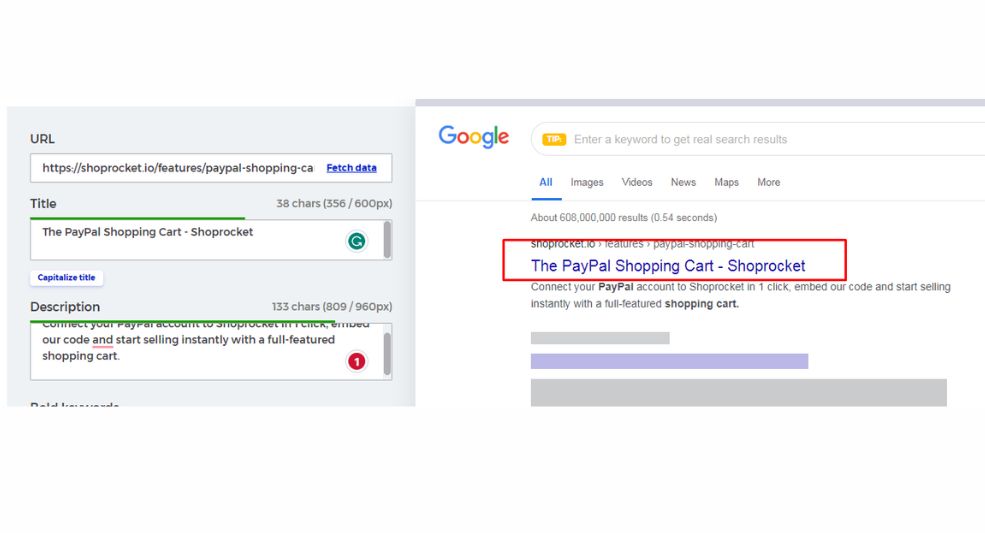
Optimize Heading Tags: Elevating Content Hierarchy for SEO Eminence
- Empower your content with strategic and optimized heading tags.
- Unleash the power of descriptive and relevant H1 tags to outline your content’s essence.
- Harness subheadings (H2, H3, etc.) to enhance the content structure and readability.
- Incorporate target keywords naturally within heading tags to improve search engine visibility.
- Maintain consistency and logical hierarchy in your heading tag usage.
- Regularly review and optimize heading tags to align with content updates.
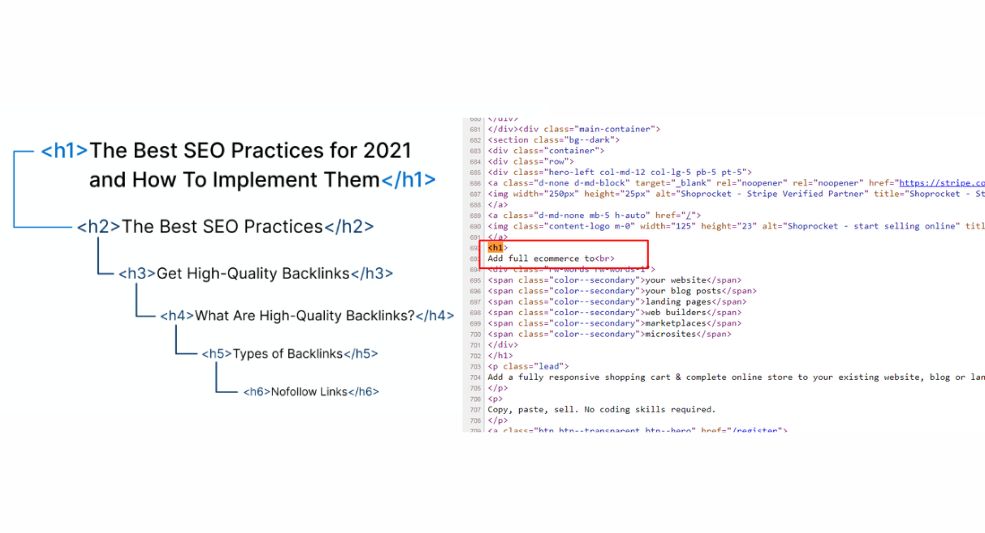
Implement Structured Data Schema
Furthermore, Data schema markup is a structured data vocabulary that assists search engines to understand the website information much better. The schemas are generally identified by search engines, giving rich snippets.
For example, it could be a data schema for an oatmeal recipe, and the search engine will let you know the user ratings, cooking time, ingredients required, and other details as shown in the image below.
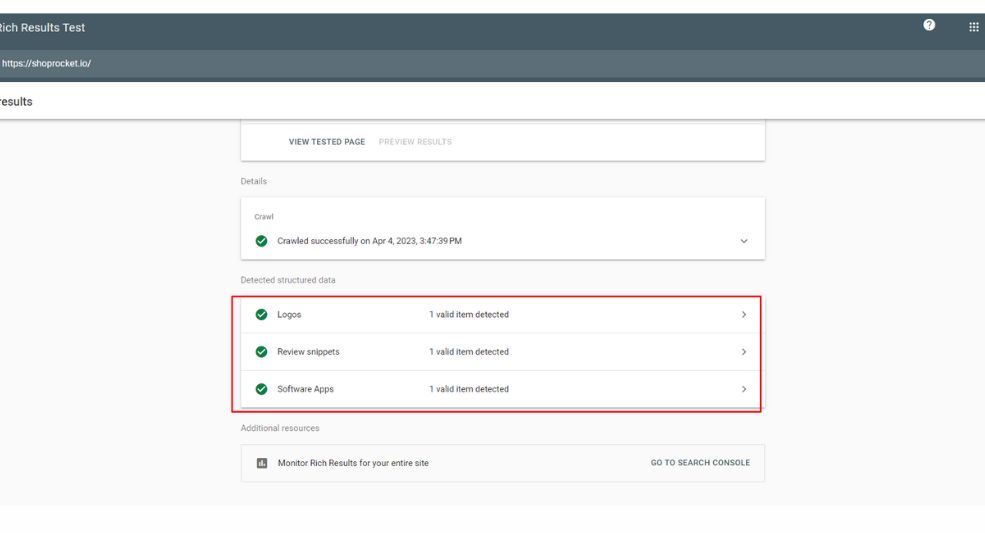
Did you know?
Google can understand more than 30 schemas.
Step 5. Technical SEO
Imagine a website that loads at lightning speed, captivating users from the very first click. Picture search engines effortlessly crawling and indexing your pages, propelling your visibility to new heights.
Envision a secure online haven where users trust your brand and their valuable data remains protected. And let’s not forget about those pesky technical issues that can wreak havoc on your SEO efforts – why not conquer them head-on?
With Technical SEO Optimization, you can unlock the true potential of your website. From turbocharging performance and streamlining crawling to fortifying security and preventing issues, this powerful toolkit empowers your online presence like never before.
Crawling:
One can easily understand the crawl activity of their particular SaaS website using the Crawl Stats Report on Google Search Console.
- Search engine crawlers explore your website’s pages for relevant information.
- Crawlers follow links on each page to discover subsequent pages.
- Use the robots.txt file to control crawling by specifying which pages to crawl and avoid.
- Gain insights into crawl activity with the Crawl Stats report on Google Search Console.
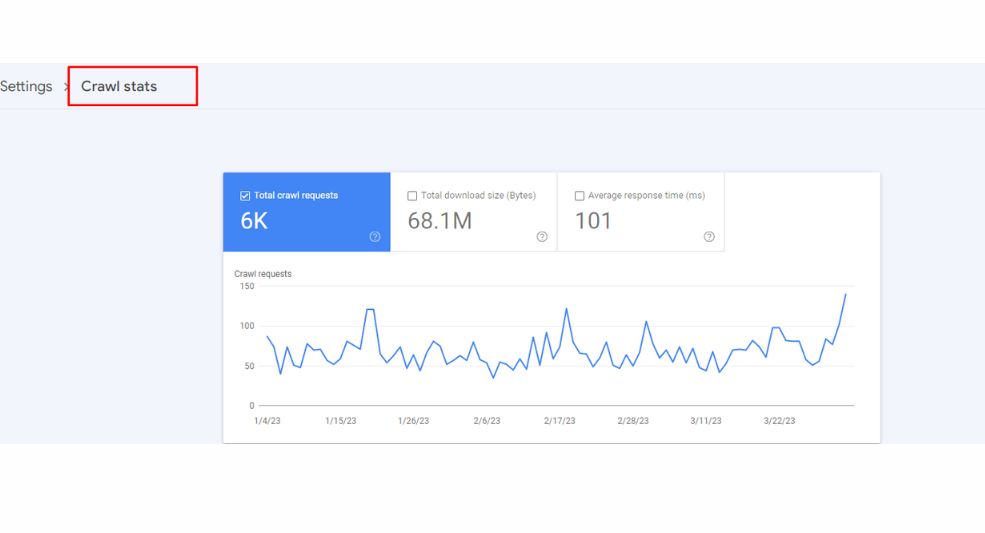
Indexing:
- Improve search engine visibility by indexing your website’s pages.
- Submit your sitemap to search engines for faster inclusion in search results.
- Optimize your website for efficient crawling and indexing.
- Proper indexing helps avoid issues like duplicate content, canonicalization errors, and broken links.
- Monitor indexed pages to track SEO performance and identify areas for improvement.
- Gain a competitive advantage by ensuring proper indexing.
Website Security:
In this example, the User-agent: * line specifies that these rules apply to all search engine crawlers. The Disallow: /cart/ and Disallow: /checkout/ lines indicate that the shopping cart and checkout pages should not be crawled or indexed by search engines.
- Implement HTTPS encryption to secure connections and protect user data.
- HTTPS encryption can also boost search engine rankings.
- Use robots.txt to exclude sensitive pages from search engine indexing.
- Avoid duplicate content issues by instructing search engines to index the primary versions of your content.
- Efficiently utilize crawl budget by excluding low-priority pages from crawling.
Core Web Vitals:
- Optimize for Core Web Vitals metrics to enhance user experience.
- Core Web Vitals measure speed, responsiveness, and visual stability.
- Improving user experience can lead to increased engagement, lower bounce rates, and higher conversions.
- Core Web Vitals are a ranking factor, impacting search engine rankings.
- Future-proof your website by prioritizing Core Web Vitals optimization.
- Gain a competitive advantage by outperforming competitors in search engine rankings and user experience metrics.
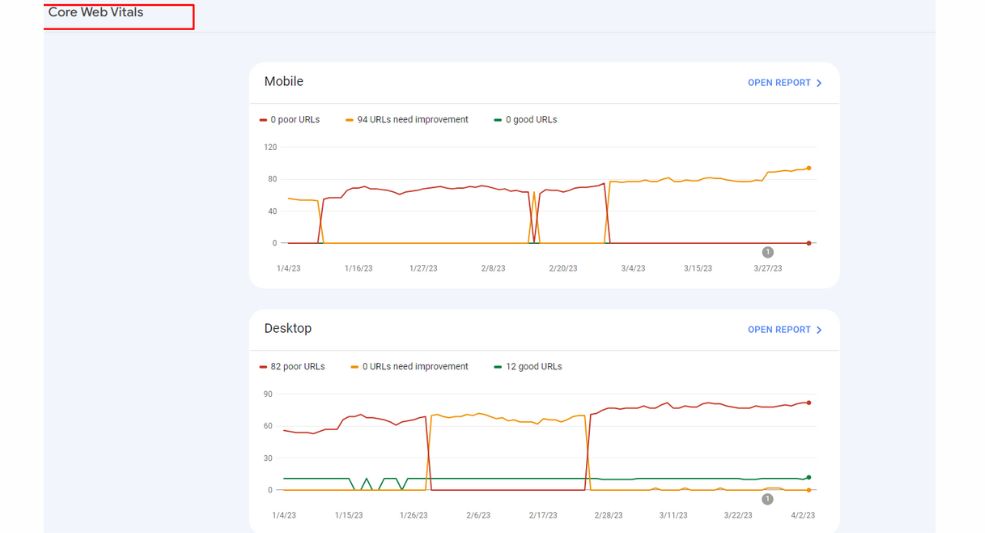
Hreflang:
- Implement hreflang tags to direct users to the correct version of your website based on location and language preferences.
- The improved user experience by reducing language barriers and confusion.
- Hreflang tags enhance search engine visibility for different countries and languages.
- Avoid penalties associated with duplicate content.
- Gain a competitive advantage by optimizing hreflang tags.
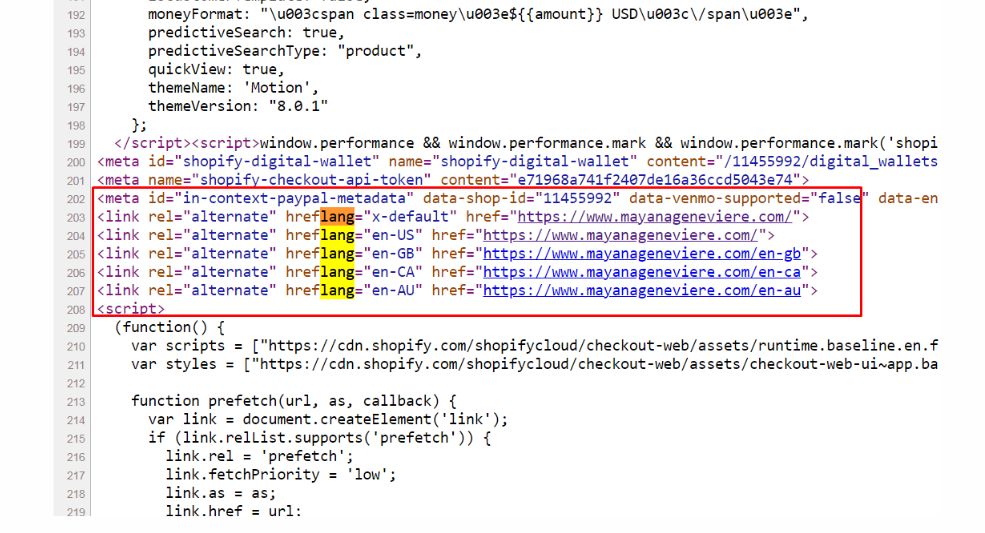
Broken Links:
- Optimizing broken links improves user experience and search engine rankings.
- Fixing broken links ensures functional and reliable links on your website.
- Improving user experience leads to increased engagement and potentially higher conversion rates.
- Broken links can negatively impact search engine rankings and trustworthiness.
- Optimize broken links to enhance crawl ability and increase search engine visibility.
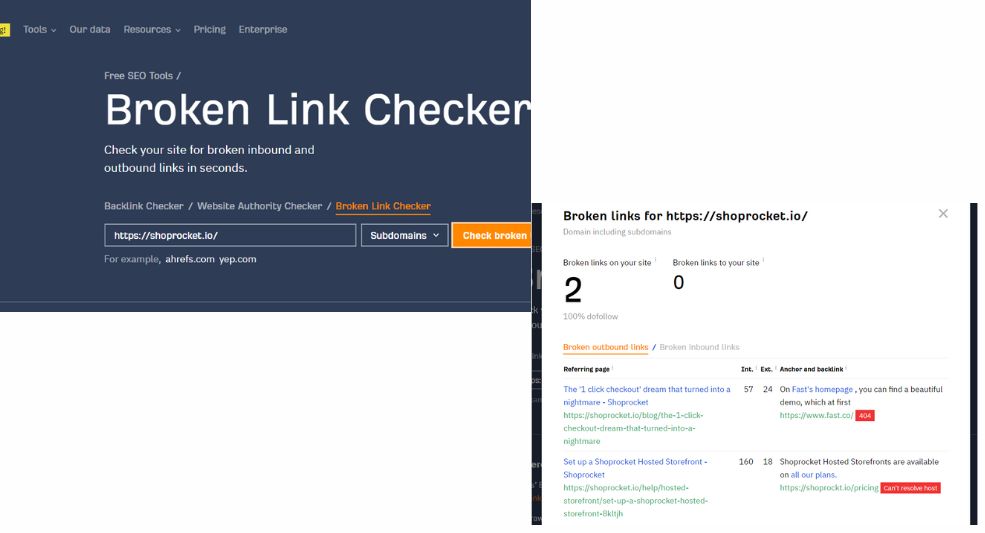
Redirect Chains:
- Use proper 301 redirect chains when changing URLs or web pages.
- Redirects help maintain search engine rankings and reclaim lost inbound links.
Step 6. Content Marketing
The Ultimate Guide to Crafting Your Content Writing Strategy
User personas are fictional characters that represent the ideal customer of a product or service. They are created based on research and data about the target audience and help to inform content strategy by identifying the needs, behaviors, and preferences of different user segments.
In the context of SaaS, user personas may include:
- The Business Owner: This persona is interested in tools and solutions that can help them streamline their business processes and increase efficiency.
- The IT Manager: This person is responsible for managing the technical infrastructure of the organization such as how to guide and best practices and is interested in tools that can help them maintain and optimize the systems they oversee.
- The Marketing Manager: This persona is responsible for driving marketing initiatives and is interested in tools that can help them increase brand awareness, generate leads, and improve customer engagement.
- The Sales Manager: This persona is responsible for driving sales and is interested in tools that can help them manage their sales pipeline, track performance metrics, and close deals.
User Persona
To effectively target your user personas, here are some helpful tricks to get started with:
Define: Conduct research and gather data to create detailed profiles of your target audience, including their demographics, interests, behaviors, pain points, and goals.
Develop: Use your user personas to inform your content strategy, including the type of content you create, the channels you use to distribute it, and the tone and style of your messaging.
Create: Produce content that resonates with your SaaS business user personas and speaks to their needs and interests. This may include blog posts, videos, social media posts, infographics, webinars, and more.
Optimize: Ensure that your content is optimized for search engines by incorporating relevant keywords, meta tags, and headers. This will help your content rank higher in search results and attract more organic traffic.
Promote: Use social media, email marketing, and other channels to promote your SaaS business services and product content and reach your user personas where they are most active online.
Measure & Refine: Monitor your content marketing performance and use analytics to measure the effectiveness of your content with each user persona. Refine your strategy based on the insights you gather to continually improve your content marketing efforts.
All in all, many SaaS businesses often make the mistake of creating content without a clear goal or strategy in mind, resulting in aimlessly shooting arrows in the dark. This approach is unlikely to serve its intended purpose, making it essential to have a specific content strategy in place before producing content.
“A simple strategy could be creating an editorial calendar each month(see image below), outlining the content topic, format, target keywords, buyer persona, call-to-action, and more for each piece. Planning ahead can increase the likelihood of hitting the target and achieving the desired results.”
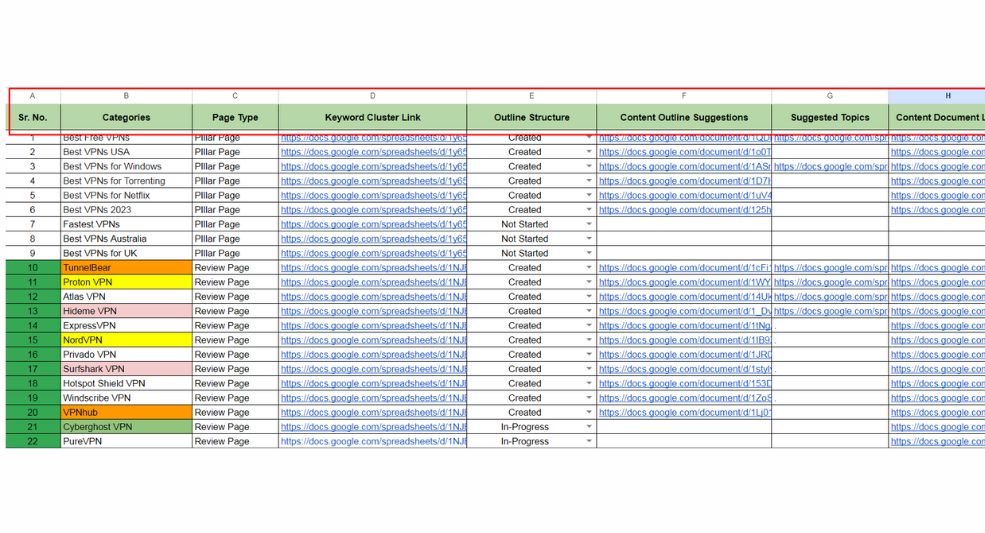
Create topic clusters
With so many terms involved in the SaaS SEO index, you might also wonder what can be done to get search engines to recommend your content and get more visitors to click on it from the result pages. In simple words, how as a SaaS business owner one can get pieces off their site and bring onto people’s screens.
Well, topic clusters can help you with the same; their structure depends on the services and products you offer, the content you create and share, and how well the information your target audience usually demands.
The image below showcases how precisely topic clusters can be put in for the end users. For example, if the main keyword is related to “Best VPNs 2023. “, these could be some of the possible topic clusters for the same.
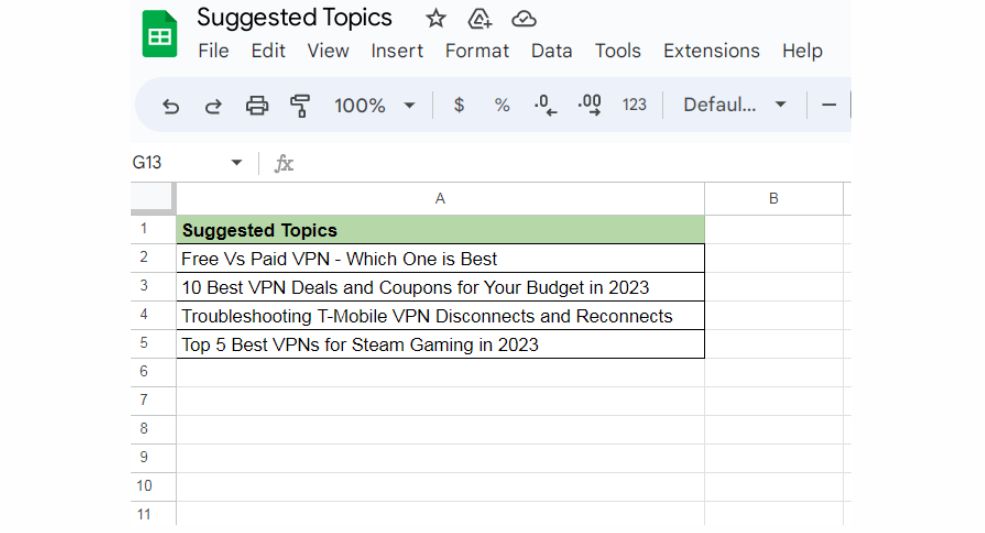
Create Keywords Clusters for Blog topics
Stepping into the scenario of content marketing for SaaS business SEO has always been a challenging part, especially when search engines keep changing their algorithms.
So despite being dedicated to the rest of the to-dos, it is equally important to take keyword clusters for blog topics into consideration.
Image showing keyword clusters for two primary categories – Best Free VPN & Free VPN Apps.
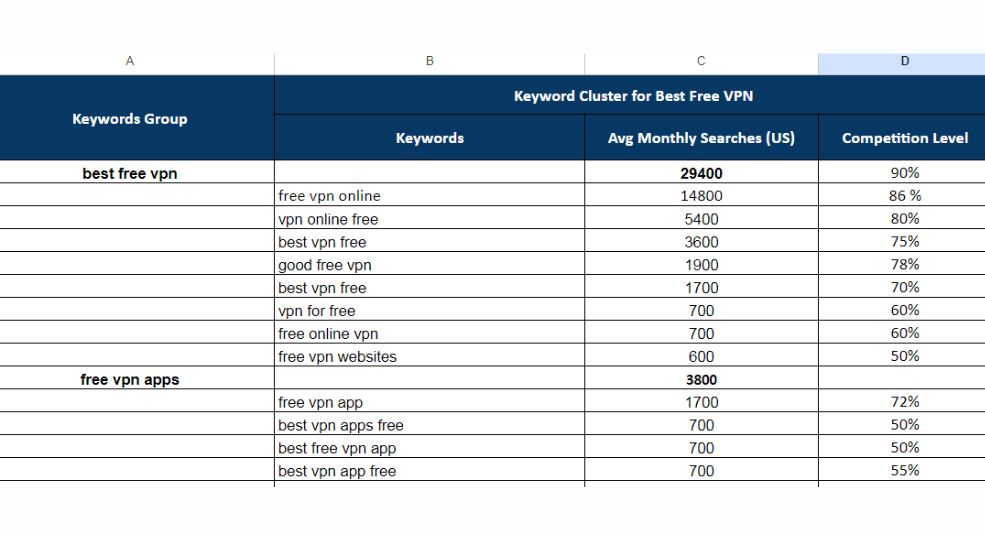
A few tips that might be helpful while creating keyword clusters for SaaS business blog topics could be:
- Keep an ideal mix of long-tail keywords and head terms. We have to say that it would be much better off if you don’t put all your eggs in a single basket
- Some SaaS businesses prefer to add arbitrary keyword density goals in their plan of action, which eventually leads to superfluous and redundant phrasing, dropping the content quality. So avoid shoving keywords in the blog topics; keep them simple and naturally included. If in doubt, take the user experience in synchronization. Well, that’s what search engines are looking for anyway.
- Focus on what your end users are looking for without losing sight of the big picture. If you simply don’t see your end users typing any of your current keywords in Google or any other search engine, then create new ones.
- Try to narrow down your keyword clusters as much as you can. With Google Trends and Google AdWords Keyword Planner, this can be done easily.
- Lastly, avoid exaggerating the authority of individual keywords As intelligent marketers continue to find loopholes in SEO strategies, Google remains vigilant in its mission to plug every gap in its search algorithm.One such gap involves the misuse of individual keywords, leading Google to shift its focus towards a new approach. As reported inForbes, we are witnessing the emergence of topical themes as the latest trend in the world of SEO.
Successful Content Types for SaaS Businesses That Grab Users’ Attention
In the world of content creation, the term “pillar content” has become a buzzword. This type of content is a treasure trove of information that provides comprehensive answers to any and all questions that a user may have about a particular topic.
It is a valuable resource that serves as a foundation for building a topic cluster, which typically includes a main pillar page focusing on the topic at hand, along with several cluster pages offering more detailed information on subtopics.
By creating this interlinked network of information, businesses can establish their authority and expertise in their industry while providing a valuable resource to their audience.
Blog Posts – Blog posts are a great way to provide valuable information to users and boost SEO. For example, a blog post about “10 Ways to Improve Your Email Marketing Strategy” can provide users with actionable tips while also using targeted keywords to improve search rankings.
How-to Guides – How-to guides provide step-by-step instructions on how to use a product or service. An example is Slack’s guide on “How to Use Slack: A Beginner’s Guide.”
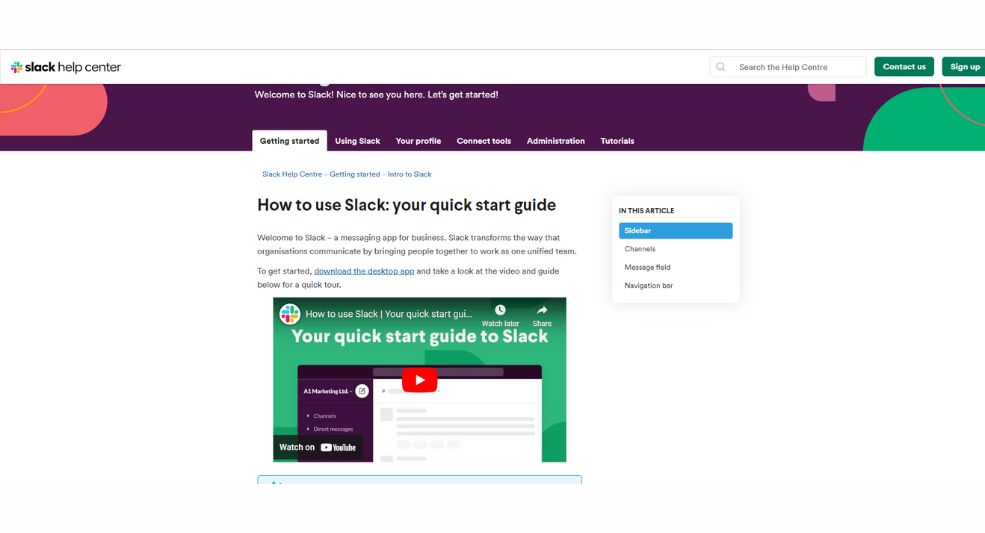
Industry News and Trends – Sharing news and trends related to a particular industry helps establish thought leadership and authority. An example is Slack’s post on
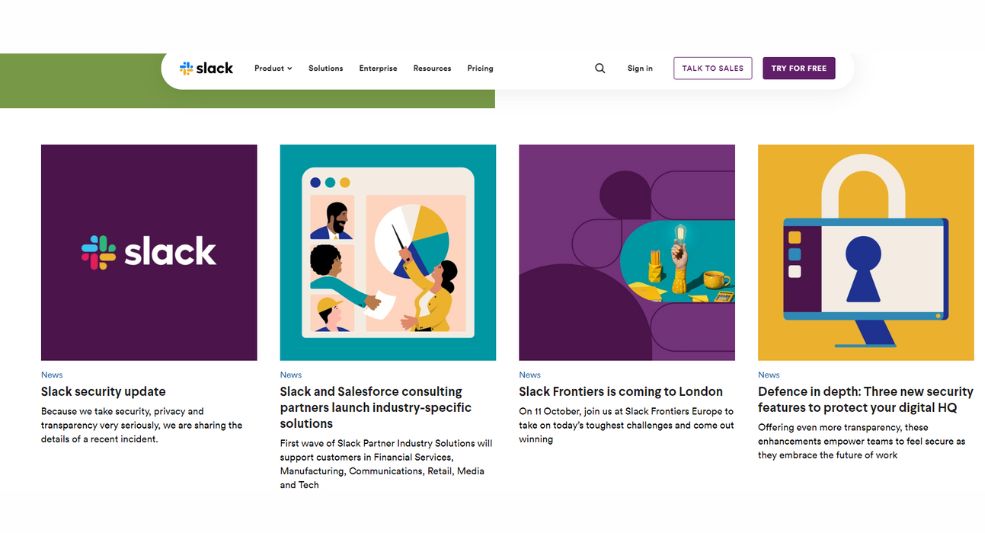
Product Updates – Sharing product updates keeps customers informed and engaged while also improving search rankings. For example, Slack’s post on “Introducing Slack Connect DMs” announces a new feature and provides information on how to use it.
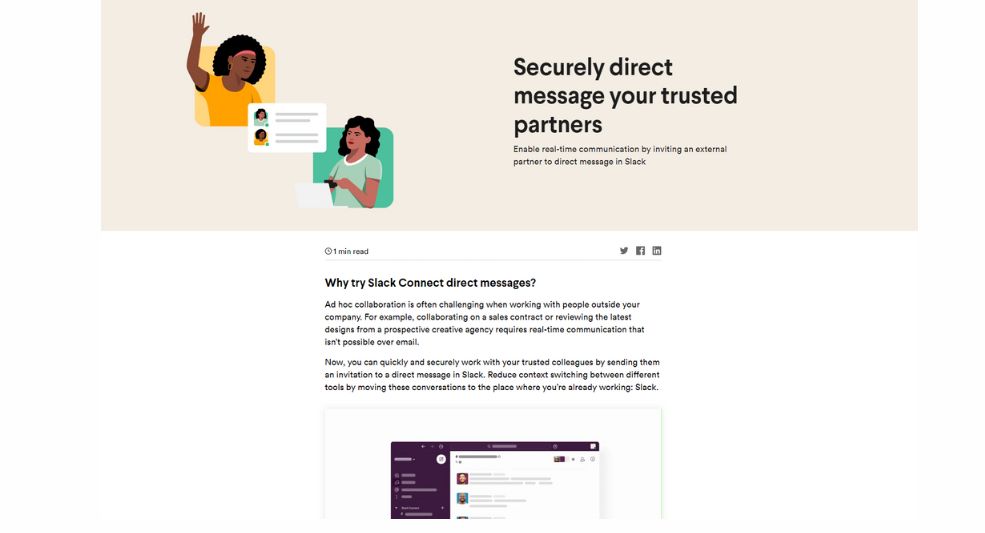
Best Practices – Sharing tips and best practices for using a product or related industry topics helps users get the most out of their experience. A great example is Ahrefs.com’s “The Ultimate Guide to Keyword Research” which provides in-depth insights and actionable tips.
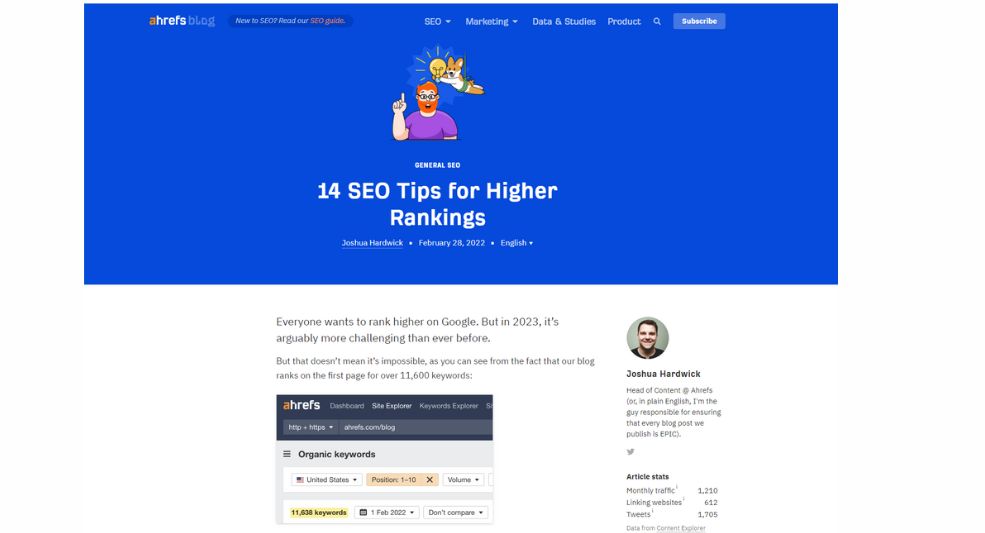
Case Studies – Customer success stories help build trust and credibility with potential customers. An example is RingCentral’s case study on “How the YMCA Used RingCentral to Improve Communications.”
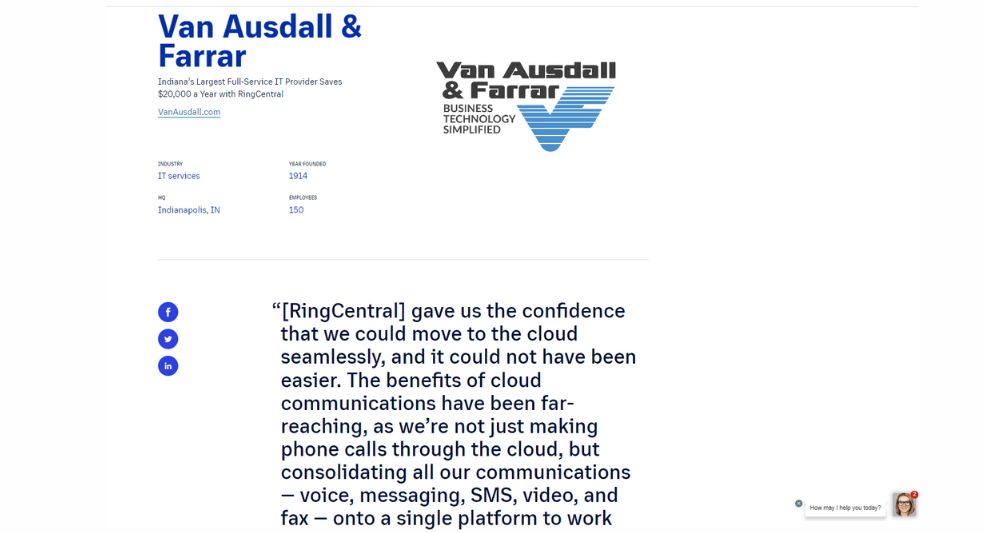
Comparison Posts – Comparing products or services can help users make informed decisions while also boosting search rankings. An example is Adobe’s post on “Compare Versions of Adobe Acrobat.”
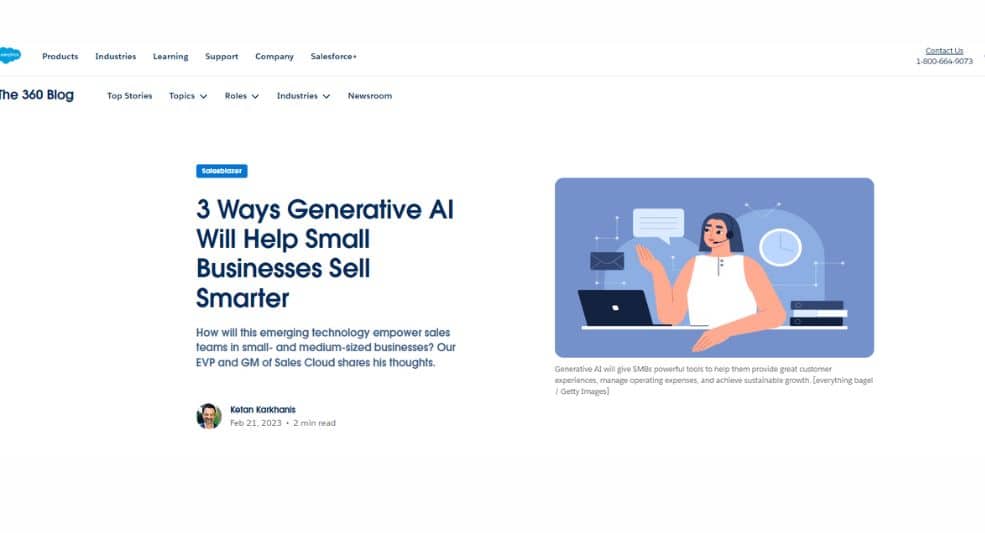
Expert Opinions – Sharing expert opinions from industry leaders help establish thought leadership and authority. An example is Salesforce’s post on “The Future of AI in Sales: Expert Opinions.”
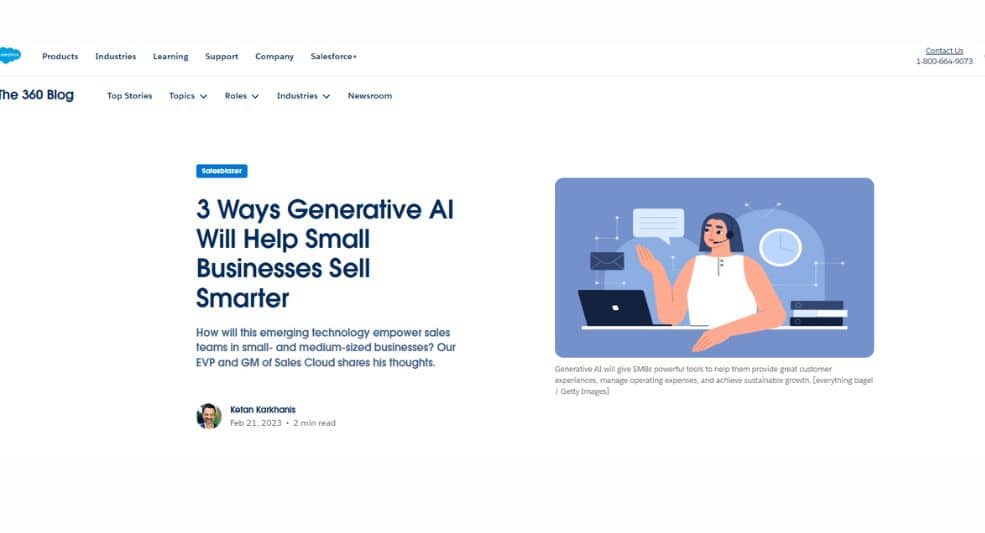
Thought Leadership – Thought leadership pieces provide insights and analysis on industry trends and issues. An example is Slack’s post on “A Modern Leader’s Guide To Organizational Transparency.”
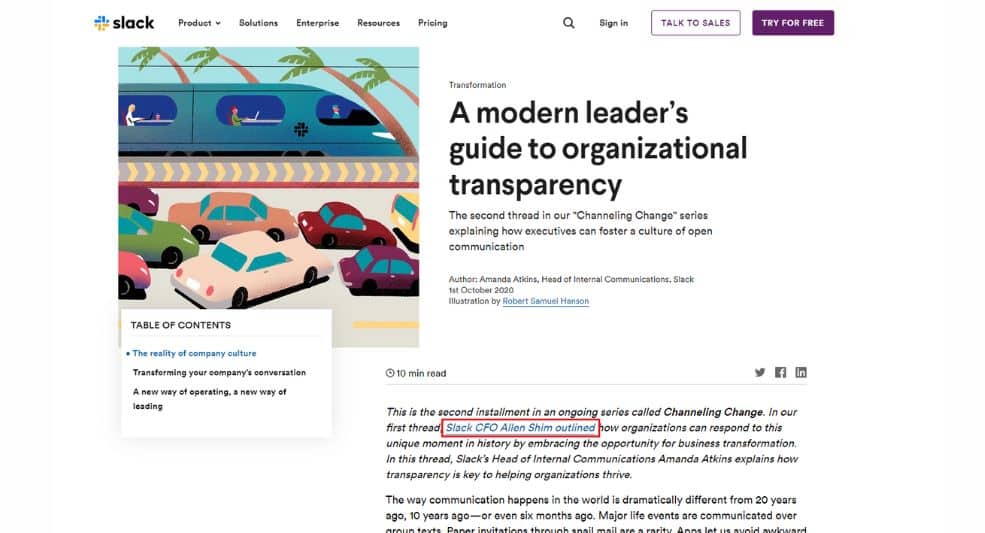
FAQs – A frequently asked questions (FAQ) section helps address common user queries while also improving search rankings. An example is HubSpot’s FAQs section, which provides answers to questions about their products and services.
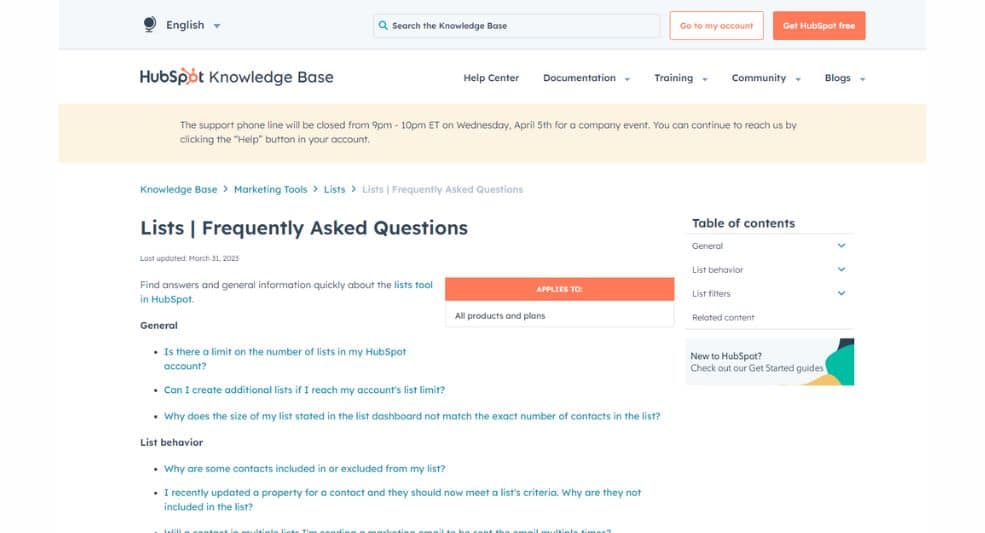
Webinars – Webinars provide valuable information to users while also allowing for engagement and interaction. An example is Hootsuite’s webinar on “Social Media Strategy for 2021.”
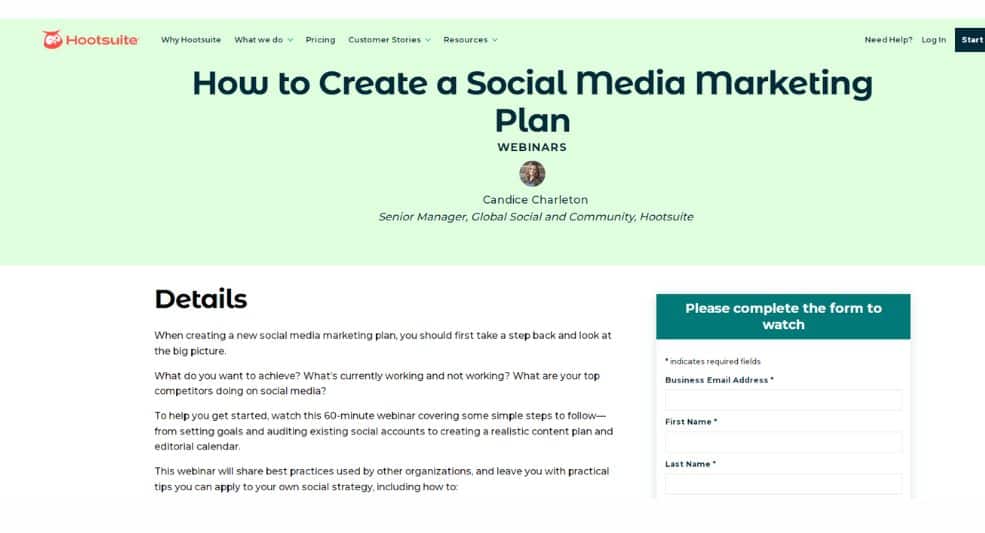
Ebooks – Ebooks provide in-depth insights and analysis on a particular topic or issue. An example is Basecamp’s ebook on “Remote: Office Not Required.”
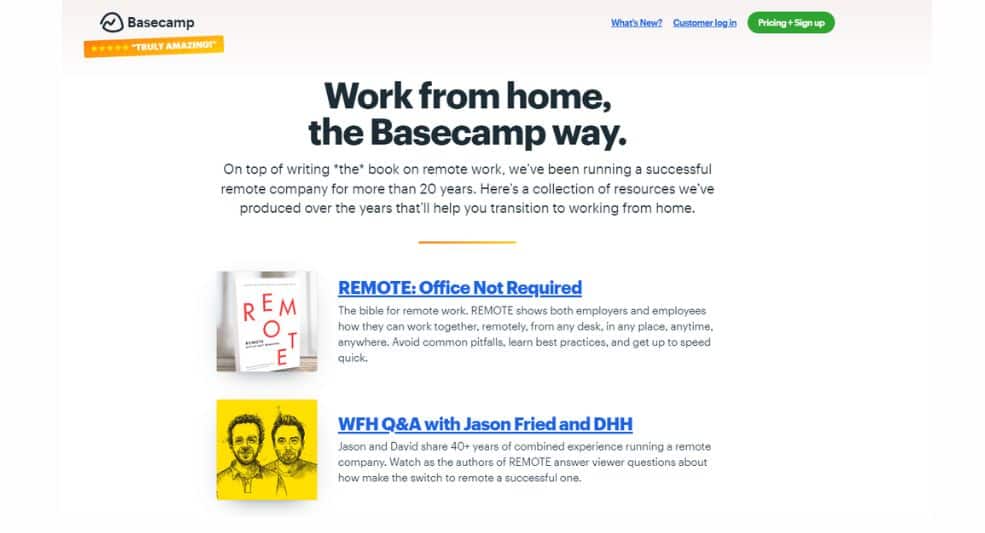
Infographics – Infographics provide visual representations of complex data and ideas. An example is Mailchimp’s blog resource hihglgihting the “Types of Inforgraphics.”
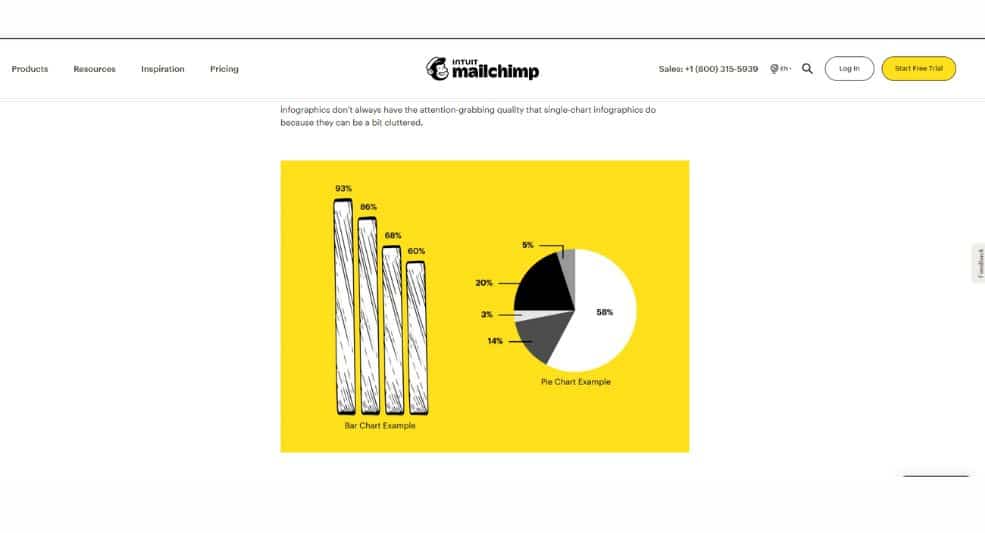
Podcasts – Podcasts provide audio content that can be informative and engaging. An example is Salesforce’s podcast “The Marketing Cloudcast.”
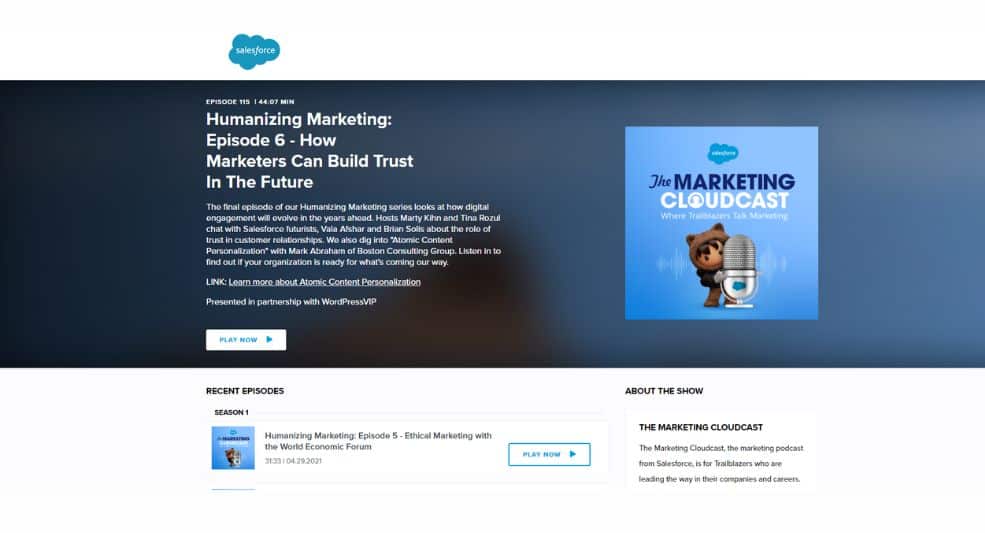
Step 7. Link Building for Saas Companies
Link building plays a vital role in the success of SaaS businesses, enhancing their online presence, visibility, and authority. By securing backlinks from reputable and influential websites, SaaS companies can improve their search engine rankings, drive targeted traffic, and ultimately increase conversions and customer acquisition.
Link building offers numerous benefits, such as establishing credibility and trust within the industry, elevating brand recognition, and expanding the reach of SaaS businesses to new audiences.
It is a key component of an effective SaaS SEO strategy, ensuring long-term growth and competitiveness in the digital landscape.
Crafting a Powerful Link-Building Strategy
Guest blogging:
A SaaS business can create a guest post and publish it on a relevant industry blog, with a link back to their website. For example, a SaaS project management tool like Snipcart creates a guest post on a popular project management blog and links back to their tool.
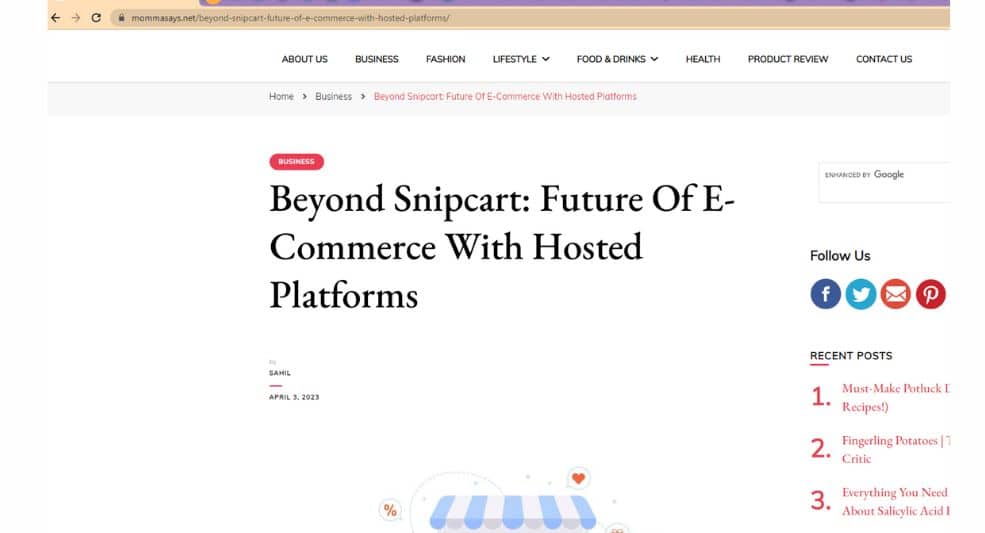
Broken link building:
A SaaS business can search for broken links on relevant websites and offer a replacement link to their own content. For example, a SaaS accounting tool finds a broken link on an accounting blog and suggests their own content as a replacement.
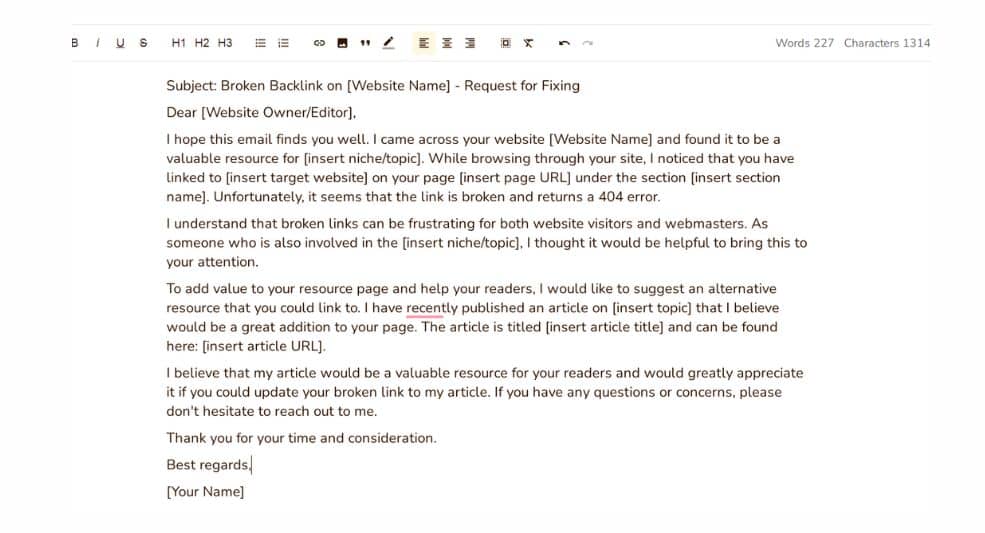
Infographics:
A SaaS business can create informative and visually appealing infographics related to their industry and promote them on social media and other relevant websites. For example, an e-commerce SEO platform or tool shares an infographic on email marketing and shares it on relevant marketing blogs.
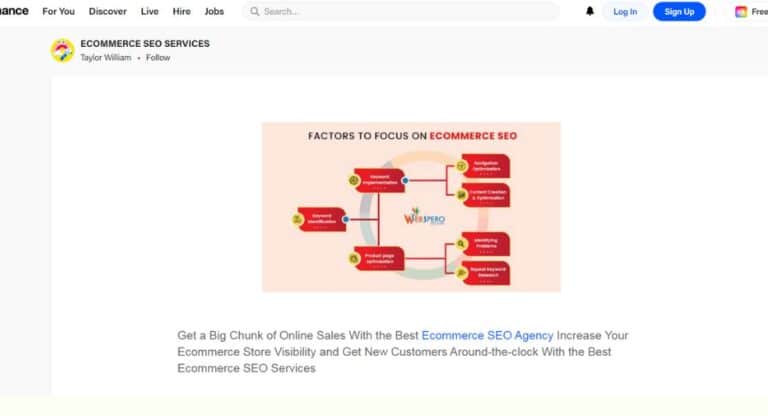
Social media:
A SaaS business can share their content on social media platforms, engage with relevant industry influencers, and participate in relevant discussions to attract backlinks. For example, a SaaS customer service tool shares its blog posts on Facebook and engages with other customer service professionals to build relationships.
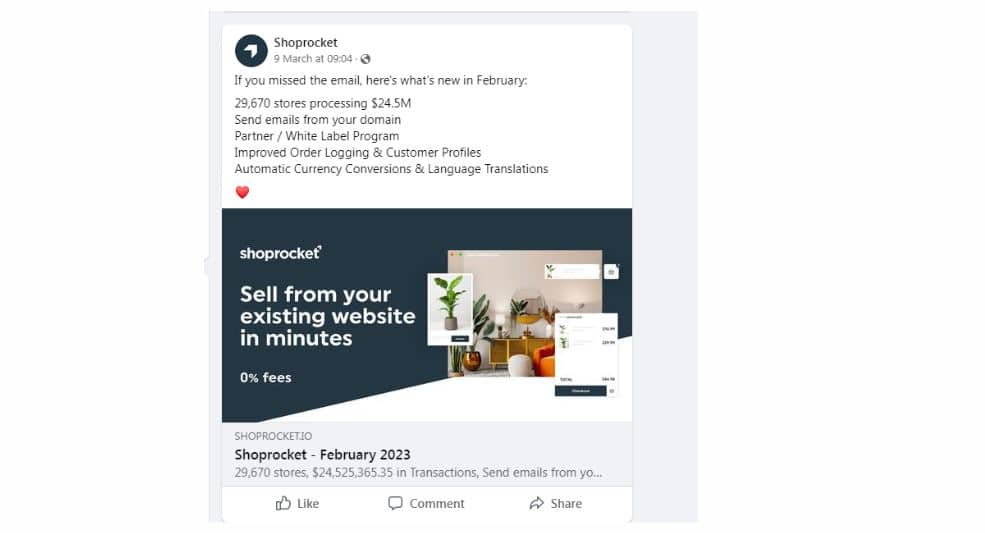
Resource page link building:
A SaaS business can identify relevant authoritative websites and request to be included in their list of recommended resources. For example, a SaaS cybersecurity tool requests to be included in a list of recommended cybersecurity tools on a relevant industry website.
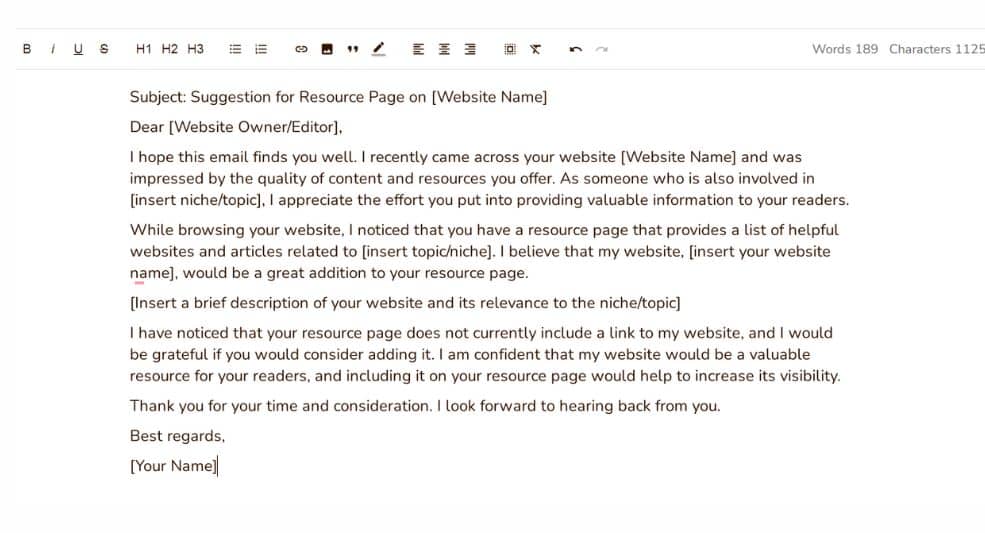
Digital PR Backlink:
HARO (Help a Reporter Out): A SaaS business can respond to queries from journalists and reporters on HARO to get their content featured in high-authority publications. For example, getting their content featured in a top business publication like Forbes or Business Insider.
SaaS Directories :
Maximizing visibility and targeting potential customers is crucial for SaaS businesses. A highly effective strategy to achieve this goal involves listing your product on SaaS directories
For example,
This list provides an excellent launching pad for crafting your SaaS marketing strategy.
- AlternativeTo
- AppExchange
- AppSumo
- BetaPage
- Better Buys
- Business-software.com
- Capterra
- Clutch
- CrunchBase
- DiscoverCloud
- Featuredcustomers
- Feedmyapp
- G2
- GetApp
- GoodFirms
- Google Business Profile
- KillerStartups
- Launching Next
- Mule Soft
- Netted
- Partner Optimizer
- PeerSpot
- Product Hunt
- Ready
- SaaS Go
Conclusion
Implementing a comprehensive SaaS SEO strategy is crucial for driving organic traffic, boosting conversions, and achieving long-term success in the competitive digital landscape.
In essence, a successful SaaS SEO strategy requires a holistic approach that encompasses various aspects of search engine optimization.
By consistently implementing these strategies and adapting to evolving trends, SaaS businesses can establish a strong online presence, attract quality organic traffic, convert visitors into customers, and achieve sustainable growth in the ever-evolving digital landscape.
Are you ready to supercharge your SaaS SEO strategy and achieve long-term success in the competitive digital landscape? Partner with our expert team today and unlock the full potential
FAQ
-
What is SaaS SEO, and why is it important for growth?
SaaS SEO refers to the process of optimizing a Software-as-a-Service (SaaS) website to improve its visibility in search engine results. It is important for growth because it helps drive organic traffic, increase brand awareness, attract qualified leads, and ultimately, achieve business growth.
-
What are the key elements of a successful SaaS SEO strategy?
The key elements of a successful SaaS SEO strategy include setting clear goals, conducting thorough keyword research, analyzing and understanding competitors, optimizing on-page elements (such as meta tags and headings), addressing technical SEO issues (like website speed and mobile optimization), creating high-quality and relevant content, building high-quality backlinks, and regularly tracking and analyzing performance metrics.
-
How can I identify the right keywords and optimize my content for them?
To identify the right keywords and optimize your content for them, you can start by brainstorming relevant topics and conducting keyword research using tools like Google Keyword Planner or SEMrush. Look for keywords that have a balance between search volume and competition.
Incorporate these keywords strategically in your website’s meta tags, headings, URL structure, and content, while ensuring the content remains valuable and relevant to your target audience.
-
What role does backlinking play in SaaS SEO and how can I build high-quality backlinks?
Backlinking plays a crucial role in SaaS SEO as it helps search engines determine the credibility and authority of your website. Building high-quality backlinks involves reaching out to authoritative websites in your industry and securing links from them.
This can be done through techniques such as guest blogging, creating valuable content that naturally attracts backlinks, or leveraging existing partnerships or industry connections.
-
What are some common SaaS SEO mistakes to avoid?
Some common SaaS SEO mistakes to avoid include neglecting keyword research, focusing solely on search engine rankings instead of user experience, using manipulative tactics like keyword stuffing or buying low-quality backlinks, ignoring technical SEO issues, and failing to track and analyze performance metrics to make informed optimizations.
-
How can I measure the success of my SaaS SEO strategy?
Measuring the success of your SaaS SEO strategy involves tracking key performance indicators (KPIs) such as organic traffic, keyword rankings, conversion rates, and engagement metrics.
Tools like Google Analytics and Google Search Console can provide valuable insights into these metrics, allowing you to assess the effectiveness of your strategy and make data-driven decisions for improvement.
-
What are some tips for staying up-to-date with the latest SaaS SEO trends and best practices?
To stay up-to-date with the latest SaaS SEO trends and best practices, it’s important to follow industry-leading blogs, attend webinars and conferences, join relevant communities or forums, and follow reputable SEO experts on social media platforms.
Additionally, regularly conducting research and experimenting with new strategies can help you stay ahead of the curve.
-
How long does it typically take to see results from a SaaS SEO strategy and what can I do to speed up the process?
The time it takes to see results from a SaaS SEO strategy can vary depending on various factors such as the competitiveness of your industry, the current state of your website’s SEO, and the effectiveness of your optimization efforts. Generally,
it can take several months to start seeing noticeable improvements. To speed up the process, focus on implementing a comprehensive SEO strategy, regularly creating and promoting high-quality content, building strong backlinks, and continually optimizing your website for better user experience and search engine visibility.
[/vc_column_text][/vc_column][/vc_row]
